A collection of books of spiritual interest for the modern traveller. Contact Us, if you have any other recommendations for books that should also be added to this list!
Recommended Books:
Tapaswiji. Saint who lived for 185 years: T.S. Anantha Murthy
Tapaswiji lived for 185 years from 1770 to 1955. Born as the prince of Patiala, he performed decades of austere penance and used the ancient Vedic technique of rejuvenation, kaya-kalpa treatment three times to regain his youth. During his long life he travelled all across India imparting spiritual wisdom to innumerable seekers of truth and healing the sick and needy.
Available from Amazon.com
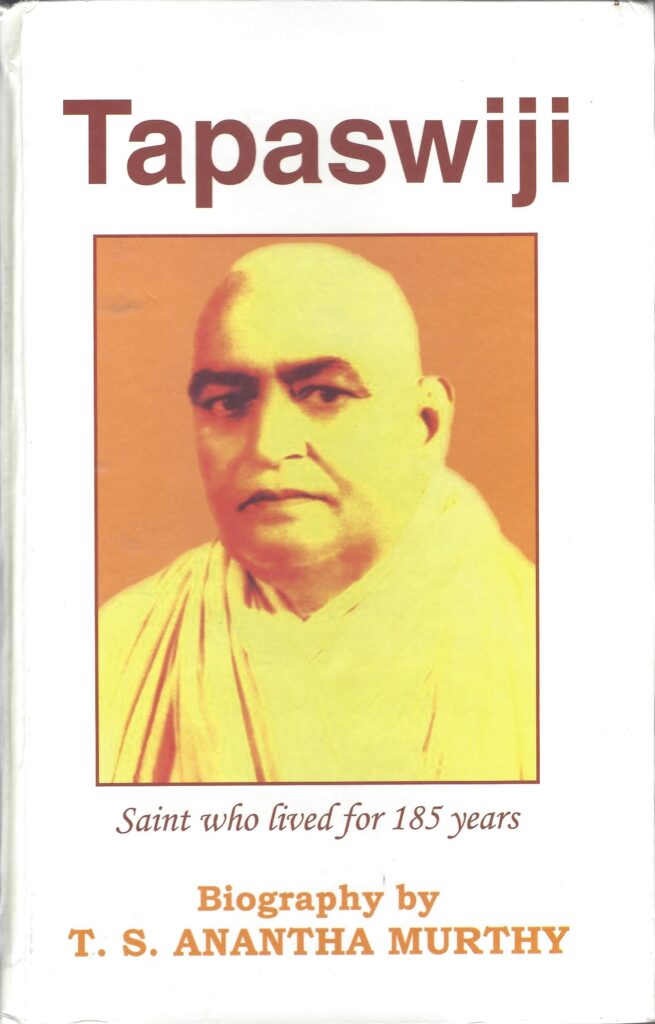
Foreword: Penance and Enlightenment by Georg Feuerstein.Introductron: Kaya-Kalpa and the “Lost” Fountain of Youth by Scott V. Anderson, M.D. Preface. 1. The Early Life of Shriman Tapasviji. 2. Krishna Singh’s Interview with the Mogul Emperor and Its Consequences. 3. Krishna Singh’s Renunciation and Triumph over the First Obstruction. 4. The Saint Settles in Hardwar and Begins His Sadhana. 5. The Saint Performs Austerities for Six Years and Departs Suddenlyfor Gangotri. 6. A Sadhu from the Punjab Earns the Grace of the Saint. 7. The Five-Thousand-Year-Old Mahatma. 8. Visit to Katmandu, Nepal. 9. The Saint’s Adventures on the Way to Parashuramkund. 10. The Saint Undergoes Kaya-Kalpa Treatment and Becomes Young Again. 11. Along the Banks of the Irawaddy River. 12. The Saint Meets a Sadhu Who Can Transform Himself into a Tiger. 13. The Saint Begins His Return Journey to India after Seven Yearsof Tapas in a Cave. 14. The British Police Arrest Shri Vishnudas and Lord Krishna Liberates Him from Jail. 15. Shri Vishnudas Obtains the Darshan of Lord Yama. 16. The Saint Performs Rigorous Tapas and Obtains the Darshan of LordKrishna. 17. The Saint Meets Ramakrishna and Obtains the Darshan of Shiva. 18. The Saint Meets a Cobra Called Motiram and Gives Spiritual Instruction to a Female Monk. 19. The Saint Gives Some Proud Sadhus a Lesson 20. The Saint Instructs Two Aghori Sadhus. 21. The Saint Heals a Dying Child and Receives the Darshan of GuruNanak. 22. The Saint Terminates His Twenty-Four-Year Tapas and Enjoys the Darshan of Lord Krishna and Ashvatthaman. 23. The Saint Obtains the Darshan of Shri Radha Devi. 24. A Haughty Young Sadhu Disturbs the Peace of the Hermitage. 25. The Saint Undertakes Pancagni and Jaladhara Tapas and Converts Water into Ghee. 26. Shri Krishna Gives Darshan Again. 27. The Saint Undergoes a Second Kaya-Kalpa Treatment at the Age of 150. 28. The Saint Visits Ashvatthaman and Other Great Sages at Alakapuri. 29. The Goddess Lakshmi Appears before the Saint and Confers Three Boons. 30. The Saint Visits Mathura, Where He Obtains the Darshan of Shri Krishna and the Gopis. 31. The Saint Meets Krishnadas, Who in His Former Birth Was the Saint’s Son. 32. The Saint Undergoes Kaya-Kalpa Treatment for the Third Time, and Lord Dattatreya Gives Him Darshan. 33. The Saint Gives the Kaya-Kalpa Treatment to Two Famous Men. 34. The Second Boon of the Goddess Is Fulfilled. 35. Rana Lakshman Singh’s Eye Trouble Is Cured. 36. The Saint’s “Son” Krishnadas Dies Suddenly.37. The Saint Explains Why the Wise May Be Overcome with Grief. 38. The Saint Arrives in South India. 39. Shriman Tapasviji Works a Miracle on the Way to Rameswaram. 40. The Saint Cures a Sick Man by His Mere Touch. 41. The Saint Confers His Grace on a Wandering Sadhu and Gives Kalpa Medicine to Sambamurthy and Siddalingiah. 42. A Wicked Sadhu Files a False Suit against the Saint. 43. The Saint’s Devotees Build an Ashram for Him at Kakinada in 1951 and the Saint Visits Shri Shivabalayogi at Adivarapupeta. 44. Shriman Tapasviji Gives His Darshan to the Rajapramukh of Mysore. 45. The Saint Falls Ill at Jhansi. 46. The Saint’s Disciples Feel That His Long Life Is Coming to an End. 47. Shri Tapasviji Casts Off His Body. 48. Shriman Tapasviji’s Philosophy. Appendix: The Soma of Inherent Happiness by Daniel Bouwmeester, M.D. The Seven Stages of Life. (246 pp.)
The Aquarian Gospel of Jesus the Christ: Levi H. Dowling
First published in 1908, Dowling said he had transcribed the text of the book from the akashic records. According to Dowling, Jesus spent a lot of time in the mystical East where he learned esoteric methods from the masters, while rebelling against the caste system. The narrative, unfortunately, has numerous historical inconsistencies, but this does not lessen the charm or the esoteric insight of this book. The Aquarian Gospel was rediscovered during the spiritual ferment of the 1960s; a beat-up paperback copy of this book was de rigeur in every hippie pad, and it no doubt played an unsung role in naming the ‘Age of Aquarius.’
Available from: www.sanctusgermanus.net/ebooks/The%20Aquarian%20Gospel.pdf
Complete Works of Swami Abhedananda: Swami Abhedananda
The eleven volumes (6240 pages) include a huge amount of material on many spiritual subjects including karma, reincarnation, spiritualism, and of course, the yogas.
Available from: https://www.vedanta.com/
The Gurus, the Young Man, and Elder Paisios: Dionysios Farasiotis
This memoir tells the story of a Greek youth who, out of a desire to know the truth empirically, was drawn back to the faith of his forefathers, Orthodox Christianity. He visited the ancient monastic republic of Mount Athos in his native Greece, where he was brought to a knowledge of the Truth of Jesus Christ by the saintly Elder Paisios (1924–1994). Believing he had only found “part of the truth” on the Holy Mountain, he chose to explore further and embarked on a trip to India, where he undertook his search in the ashrams of three famous gurus.
Available from Amazon.com
The Hill of Fire: Monica Bose
A fascinating account of a courageous woman’s search for truth carried to the very heart of Buddhism and Hinduism. Suzanne Alexandra Curtil, a talented dancer, doctor and diviner left her native France in 1925 for India. There she became a Buddhist priestess, the first woman to enter the Southern Buddhist or Theravada religious order in 800 years. On a mission to the Himalayas, she met and was instructed by the renowned Tibetan Buddhist Teacher, Tromo Geshe Rinpoche. In 1936 she went to visit Sri Ramana Maharshi who dwelt on Arunachala, known as the Hill of Fire, in Tiruvannamalai, southern India. She remained many years in Tiruvannamalai to practice the great Seer’s teachings. She also engaged in selfless medical practice in the town and surrounding villages. The Hill of Fire is written by her daughter, who adds her own memories of Sri Ramana Maharshi and of life in the temple town of Tiruvannamalai.
Available from Amazon.com
The Jesus Mystery. Of Lost Years and Unknown Travels: Janet Bock
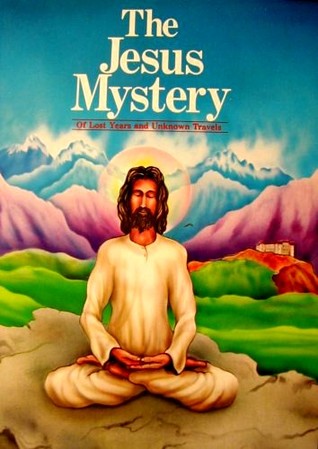
Dick and Janet Bock, whose painstaking research bore fruit in a film, The Lost Years (1977), and a book, The Jesus Mystery (1980). “It gradually dawned on us that those years were missing because someone had taken them out of the records, out of the Bible. We could not imagine Jesus would have appeared in Galilee at the age of 30 and hidden the major part of his life from his disciples whom he loved and asked to follow him.”
“In examining historical records of the early Christian Church, it became evident that early Church councils, especially the First Council of Nicaea in 325 AD, changed many points of doctrine.”
It is common scholar knowledge that the gospels were assembled by committee in 325 AD, who chose which histories would – and would not – go in.
Available from Amazon.com
The Journey Home. Autobiography of an American Swami: Radhanath Swami
Within this extraordinary memoir is a colourful tapestry of adventure, mysticism, and love. Readers follow Richard Slavin from the suburbs of Chicago to the caves of the Himalayas as he transforms from young seeker to renowned spiritual guide. An intimate account of the steps to self-awareness and also a penetrating glimpse into the heart of mystic traditions and the challenges that all souls must face on the road to inner harmony and a union with the Divine. Through near-death encounters, apprenticeships with advanced yogis, and years of travel along the pilgrim’s path, Radhanath Swami eventually reaches the inner sanctum of India’s mystic culture and finds the love he has been seeking.
Available from Amazon.com
The Lazy Man’s Guide to Enlightenment: Thaddeus Golas
The 1972 underground classic, Lazy Man’s Guide to Enlightenment teaches how to improve the quality of life, to feel good, and to determine what’s real.
Available from Amazon.com
The Nirvana Express: Mick Brown
In 1897, an Indian yogi demonstrated yoga positions to a bemused audience at London’s Westminster Aquarium. Four years earlier, Hindu philosopher Swami Vivekananda spoke at the first World Parliament of Religions in Chicago, where Annie Besant extolled the ‘exquisite beauty’ of his spiritual message.
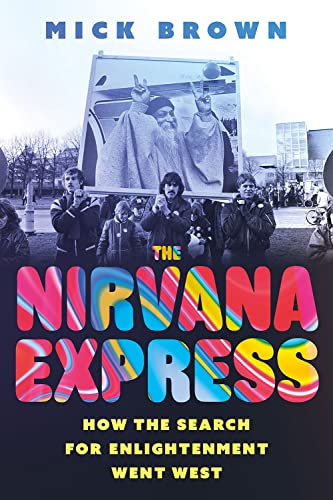
The Victorians were fascinated by, yet suspicious of, Indian religious beliefs and practices. But within two generations, legions of young Westerners were following the ‘hippie trail’ to the subcontinent, the Beatles meditating at the feet of Maharishi Mahesh Yogi. Journalist Mick Brown’s vivid account charts this eccentric history of Western obsessions with Indian faith, through a curious cast of scholars, seekers, charlatans and saints.
From bestselling epic poems on the Buddha to murder plots, magic and the occult, The Nirvana Express (Hurst & Company, London) is an exhilarating, sometimes troubling journey through the West’s search for enlightenment.
Mick Brown is a journalist for The Daily Telegraph.
His books include ~
The Spiritual Tourist: A Personal Odyssey Through the Outer Reaches of Belief
The Dance of 17 Lives: The Incredible True Story of Tibet’s 17th Karmapa
Tearing Down The Wall of Sound: The Rise and Fall of Phil Spector
Available from Amazon.com
The Prophet: Khalil Gibran
The prophet, Almustafa, is about to board a ship which will carry him home. He is stopped by a group of people, with whom he discusses topics such as life and the human condition. The book is divided into chapters dealing with love, marriage, children, giving, eating and drinking, work, joy and sorrow, houses, clothes, buying and selling, crime and punishment, laws, freedom, reason and passion, pain, self-knowledge, teaching, friendship, talking, time, good and evil, prayer, pleasure, beauty, religion, and death.
Available from: https://www.penguinrandomhouse.com/books/59590/the-prophet-by-kahlil-gibran/9781101970782/
The Razor’s Edge: Somerset Maugham
First published in 1944, it tells the story of Larry Darrell, an American pilot traumatized by his experiences in World War I, who sets off in search of some transcendent meaning in his life and of the absolute. The story begins through the eyes of Larry’s friends and acquaintances as they witness his personality change after the War. His rejection of conventional life and search for meaningful experience allows him to thrive while the more materialistic characters suffer reversals of fortune. The progress of his spiritual odyssey involves him with some of Maugham’s most brilliant characters – his fiancée Isabel whose choice between love and wealth have lifelong repercussions, and Elliott Templeton, her uncle, a classic expatriate American snob. Maugham himself wanders in and out of the story, to observe his characters struggling with their fates. Adapted into film twice, first in 1946 and then a 1984 adaptation starring Bill Murray.
Author David Godman has contributed to a scholarly debate on the true identity of Larry Darrel. Maugham visited Ramanasramam in 1938 and later wrote an essay entitled The Saint about his visit. Maugham used the character of Darrel as a follower of a Hindu guru featured in the novel; the guru’s physique and teachings were based on those of Ramana Maharshi.
Available from Amazon.com
The Sacred History. How Angels, Mystics and Higher Intelligence Made our World: Jonathan Black
The workings of the supernatural in history, repositioning ancient knowledge in such a way that we see truth in another way.
Available from Amazon.com
The Secret lives of Alexandra David-Neel. Biography of the Explorer of Tibet and its Forbidden Practices: Barbara Foster and Michael Foster
The authors’ affection for their subject is warmly communicated in this biography of David-Neel (1868 – 1969), the French Tibetophile who was the first European woman to explore the once forbidden (to foreigners) city of Lhasa. The Fosters already have one biography of David-Neel to their credit (Forbidden Journey, 1987). In their preface to this book, they present it as an entirely revised edition of the earlier one, incorporating information gleaned from additional source materials and interviews. The authors’ characterisation of their subject’s many writings – “witty and entertaining” – applies as well to their own. The biography opens as a movie might, on David-Neel’s surreptitious departure from Lhasa in May 1924, after having entered illegally following a perilous journey. Succeeding chapters flash back to her childhood, marriage, and first journeys east, culminating in the great trek by foot to Lhasa. The final chapters on the end of her life, back in France, also review her major writings, which include autobiography, novels, translations of Tibetan texts, and studies of Buddhism. The many epithets used throughout the book, in lieu of the heroine’s name – the seeker, adventurer, pilgrim, scholar, orientalist, iconoclast – give some feel for the scope of her character and work. The authors present her as a Tantric mystic who scorned mystification; an ascetic who laid carpets in her Tibetan cave-dwelling; a radical democrat who, a colonialist still, condescended to her adopted Sikkimese son: in short, as the union of opposites that many deeply religious people are. The authors’ principal concern is that David-Neel be remembered for her part in preserving Tibet’s religious legacy – especially now that it is under attack – through the texts she translated and saved for the West, including Tibetan versions of works no longer available in the original Sanskrit from the early Buddhist philosopher Nagarjuna. From the joint talents of the authors (a librarian and a novelist) comes a winsome biography that takes its subject more seriously than itself.
Available from Amazon.com
The Smoky God or A Voyage to the Inner World: Willis George Emerson

A book that is presented as a true account written by Willis George Emerson in 1908, which describes the adventures of Olaf Jansen, a Norwegian sailor who sailed with his father through an entrance to the Earth’s interior at the North Pole.
The book recounts, in swift detail, his voyage into Earth’s “inner world” through an opening at the North Pole. For two years, Olaf Jansen and his father lived among the people of the “within world,” deep beneath the earth’s surface. Perhaps most interesting is Jansen’s description of the inner world’s strange climate and the book’s eponymous Smoky God, that refers to the inner world’s glowing, smoky sun, which lies at the very centre of the planet. Some, after reading The Smoky God, have claimed that the inhabitants are related to biblical figures, such as Methuselah, who myth states lived to the age of 969. Others suggest they are Atlanteans, who fled to the inner earth after their civilization was destroyed. Or perhaps we’re actually speaking of Agartha, the golden realm of Tibetan Buddhist myth. Returning home, they tried setting off to the north, where they had entered, but found the cold winds pushing them south. They travelled toward the South Pole, where after many, many months they returned to the surface. Unfortunately, they became trapped between icebergs, and later found themselves at the mercy of collapsing ice shelves. Olaf’s father died, while he was left stranded on top of a floating iceberg. Eventually, he was saved by a passing fishing vessel, though his respite was short-lived. After sharing his story with the ship’s captain, he was locked away to be examined by their on-board physician. When he returned home, he was considered insane and placed in a “madhouse” for about 28 years. An unfortunate end to an otherwise extraordinary tale.
Available from Amazon.com
The Spiritual Tourist. A Personal Odyssey Through the Outer Reaches of Belief: Mick Brown

On a pilgrimage to see the Dalai Lama in the foothills of the Himalayas; blissed out in Germany with a beautiful Indian girl, believed to be “the Divine Mother;” witnessing miracles in the ashram of Sai Baba; and searching for the Messiah in the back streets of London, Mick Brown joins the holy, the lost, the wise and the foolish on the highways and backroads of spiritual tourism.
A review by Anthony Campbell – It’s characteristic of the late twentieth century that any Westerner in search of spiritual enlightenment should automatically seek for it in the East. Despite one or two rather unconvincing attempts to find timeless wisdom in the New World, the East, and especially India, is regarded by many Westerners as the chief source of such things, and Mick Brown, a freelance journalist in search of “an adventure of the spirit,” naturally cast his eyes in that direction. Too young to have taken part in the hippy migrations of the sixties (he was born in 1950), he comes to all this with a fresh eye and makes an agreeable enough travelling companion.
We are confronted with mysteries and miracles even before we leave London. Brown visits two Indian families where vibhuti (sacred ash) is appearing in large quantities on pictures of Sai Baba, the Indian guru who is said to be an avatar (divine manifestation) and who reputedly performs all kinds of miracles for his followers. Bemused and unable to explain how the vibhuti is produced, but satisfied that there is no evidence of fraud, Brown sets off for India to see Sai Baba for himself. The visit isn’t an entire success; he fails to obtain a personal interview with Sai Baba and has to glean what he can from his disciples. He departs, feeling rather disillusioned.
Next he tries Tibetan Buddhism; he visits a village in southern Spain where lives a young boy who is said to be the reincarnation of a renowned Tibetan lama who died in 1984. Brown seems rather impressed by the boy. A moment later we cut, rather confusingly, back to India, where we meet more Tibetans, including the Dalai Lama and a monk who gives oracles while in trance.
There also are encounters with female gurus and their disciples, notably Mother Meera, a young Indian girl living in Germany. She takes his face in her hands, gazes into his eyes, and makes him feel she is searching his soul. He finds this a profoundly disturbing experience. Later, he goes back for a second visit, by which time far more people are coming and it is difficult to get an interview, though, when he does so, he once more has what he feels is an important experience as she holds his face in her hands.
Back in India again he visits more ashrams. This part of the book contains a fair amount of historical material about the origins of the Theosophical Society and its connection with Krishnamurti; this is less interesting, being third-hand. Then to the USA, where he visits a church whose windows appear to have golden crosses in the glass; these are found to have a natural explanation. Returning to England, we experience more encounters with gurus and conclude with a visit to yet another Tibetan Buddhist monastery, this time in Scotland.
As will probably be apparent from this summary, Brown goes in for a cinematic technique, continually cutting back and forth in place and time; this makes it difficult to sort out a narrative sequence, which is no doubt deliberate. He doesn’t reach any final illumination, but he is confirmed in his conviction that “the world is more of spirit than of matter; that what is unseen is more important than what is seen. The things we most value are felt with the heart more than viewed with the naked eye.” Even if you don’t entirely agree with this, you may still find the book of interest, but don’t expect any ultimate answers.
Mick Brown is a journalist for The Daily Telegraph.
His books include ~
The Nirvana Express
The Dance of 17 Lives: The Incredible True Story of Tibet’s 17th Karmapa
Tearing Down The Wall of Sound: The Rise and Fall of Phil Spector
Available from Amazon.com
The St. Thomas Christian Encyclopaedia of India: Edited by Professor George Menachery
Encompassing within a single work our present knowledge of every aspect of Indian Christianity.
Available from: http://www.indianchristianity.com/html/brochure.pdf
The Synagogues of Kerala: Their Architecture, History, Context, and Meaning: Jay Arthur Waronker
This thesis records the architectural history of the functioning, decommissioned but still standing, and lost synagogues on the Malabar Coast of Kerala. Throughout India, there are thirty-five existing or former Jewish houses of prayer, built by distinct communities of Jews, dating from the sixteenth to the twentieth century.
Available from: https://ecommons.cornell.edu/handle/1813/17604
The Templar Revelation: Lynn Picknett and Clive Prince
The mysterious world of secret societies of the Freemasons, the Knights Templar and the Cathars encompassing the ideas and beliefs of the first century AD. A devastating new view of the real character and motives of the founder of Christianity and the roles of John the Baptist and Mary Magdalene.
Available from Amazon.com
The Templars. History & Myth: Michael Haag
One of the most provocative, puzzling, and misunderstood organizations of medieval times, the legendary Knights Templar have always been shrouded in a veil of mystery. Michael Haag offers a definitive history of these loyal Christian soldiers of the Crusades—sworn to defend the Holy Land and Jerusalem, but ultimately damned and destroyed by the Pope and his church. The book includes the findings from the Chinon Parchment, the long-lost Vatican document absolving the Knights of heresy.
Available from: https://www.harpercollins.com/9780061775932/the-templars/
The Unknown Life of Jesus Christ: Nicolas Notovitch
Nicolas Notovitch was known for his contention that during the years of Jesus Christ’s life missing from the Bible, he followed traveling merchants to India and eventually on to the Hemis Monastery in Ladakh, where he studied Buddhism. While recovering from a broken leg at the at the monastery, Notovitch was shown the text to The Life of Issa and realised that it recounted the lost years of Jesus.
Available from Amazon.com
The Voice of Babaji: A Trilogy on Kriya Yoga: V.T.Neelakantan, S.A.A. Ramaiah and Babaji Nagaraj
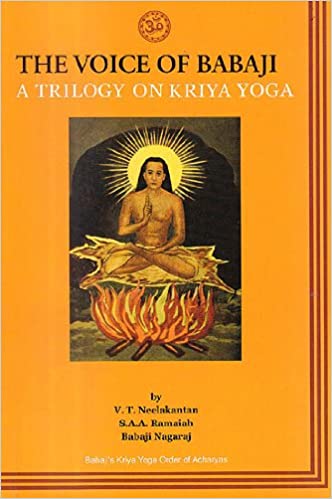
During 1952 and 1953 Babaji appeared nightly before V.T. Neelakintan, a mystic and respected journalist, at his home in Egmore, Madras, India.
Over a period of time, Babaji dictated three books to Neelakantan, who wrote them down verbatim, containing profound and important statements from one of the world’s greatest living spiritual masters, which will inspire all those who aspire for a higher life.
Babaji predicted that the books would eventually be a powerful source of inspiration and support for the Mission of Kriya Yoga: unity in diversity, world peace and God-realisation.
Available from Amazon.com
Vedanta. Voice of Freedom: Swami Vivekananda
This collection serves as a wonderful introduction to the writings of Swami Vivekananda and, thus, to Vedanta. This book presents in a clear and concise form the spiritual wisdom of India as it has evolved over five thousand years.
Available from Amazon.com
Visits to Saints of India: Swami Kriyananda

Chronicling his stays in India from 1958 to 1962 and again in the winter of 1972/73, Swami Kriyananda shares inspiration from his visits to many saints, including Anandamayee Ma, Yogi Ramiah, Swami Muktananda, Swami Sarayan, and Sathya Sai Baba.
In 1958 and 1972, Swami Kriyananda (a close and direct disciple of the great Indian spiritual master Paramhansa Yogananda – author of Autobiography of a Yogi) traveled to India, meeting a number of great saints in that distant land and writing about his experiences in a series of letters to spiritual friends, and brother and sister disciples. This book captures the spirit of Yogananda’s classic autobiography and other enlightening accounts of sacred experiences in the East. In Visits to Saints of India we walk alongside Kriyananda and see India and its spiritual representatives through his eyes – the eyes of an advanced Western yogi and truth seeker. As Kriyananda wrote in the prologue to this book: India! Land of great saints and yogis. One has only to set foot on that sacred ground, if he is sensitive, to feel the blessings rising up therefrom. Fittingly did Paramhansa Yogananda end his life with the last words of his poem, “My India.” “I am hallowed. My body touched that sod.”
Available from Amazon.com
Walking with a Himalayan Master: Justin O’Brien
This autobiography of an American yogi is the story of the training of a Western scholar by a unique Himalayan Master, one of the greatest yogis of the century.
A sceptical American scholar reluctantly meets a Himalayan master and a new vista of the ancient teacher-disciple paradigm emerges for this century. Going where few have ventured, we resonate with theologian and philosopher Justin O`Brien as he zig-zags through a personal quest for the ultimate. His fascinating search for a holistic lifestyle was sparked and prodded by a great saint, yogi, and scientist who called the Himalayas his home.
Walking with a Himalayan Master reveals the incredible career of the sage, Swami Rama, who shattered the boundaries of human possibilities and transformed the lives of thousands. It reveals how everyday events and ancient spiritual practices enabled an American to retrace the trail of human development to the wisdom already tried and confirmed by the Himalayan Masters.
Justin O’Brien is a theologian, philosopher, lecturer, and long-time explorer in human consciousness. He holds a Doctorate in the Philosophy of Consciousness and a Doctoral in Theology from Nijmegen University, The Netherlands. He is now a monk in the Himalayan Tradition, known as Swami Jaidev Bharati. He is spiritual director at the Institute of the Himalayan Tradition in Saint Paul.

When God Walks the Earth: Jack Shemesh
A devotee’s learned treatise has analysed thoroughly the divinity of Sri Sathya Sai Baba. Sai Baba’s mandir in Prasanthi Nilayam is a replica of creation and reveals all Vedic truth. Out of print, limited availability

The following explanation for Salvation and Liberation, comes from When God Walks the Earth by Jack Shemesh.
“Jesus warned that until the coming of the Father, all should be aware of false prophets who would preach in His Name. He stated that one must be born again, not of the flesh, but of the spirit. This clearly depicts that being born again of the flesh, something called transmigration of the Self from identity to identity, was taught by Jesus based on Vedic, Egyptian, Buddhist and Hebraic knowledge. Christianity was accepted in Rome only 400 years after the Crucifixion. In later times, certain powerful churches distorted these Vedic Truths. These distortions brought about the illusion that heaven was a peak goal, and that believing in Jesus was all that was necessary to become saved. Saved from what? No one can use someone else to attain a palace and get away without consequences. Grace can be earned, but not stolen. Even those who earn salvation do not attain liberation, as salvation is only protection for the dual-minded who fear pain, suffering, disease, the unknown and unexpected. Liberation is freedom from all these states of illusion.”
“Many Christian believers of today are repeating the same ignorant mistakes which many Jews, Romans and neighbouring natives of Jesus’ day committed. They did not recognise or accept Jesus then, and much of their Christian offspring of today does not quite recognise the Divine in the present human form. This does not only pertain to followers of Christianity, but to humanity at large, whether religious, atheist, monist or what have we.”
“The Book of Revelations remains a mystery to even the wisest Christian philosophers because the Vedic contents on which it was based in connection with Nadi Grantas (predetermination of the future of humanity in general), is beyond intellectual comprehension. Many profess to have understood the figures 600,606 (six-hundred-three-score and six) and 144,000. These figures can only be known in depth and meaning to one who has actually had exposure to the intimate sources or beings who guard that knowledge. That is only possible through direct experience, as Jesus and other great Souls or saints have been blessed to receive.”
Where did Jesus Die: J.D. Shams
A book from the perspective of the Ahmadiyya Muslim Community, which believes that Jesus survived the Crucifixion and left for India.
Available from Amazon.com
White Mountain: Robert Twigger

A sweeping biography of the Himalayas.
Home to mythical kingdoms, wars and expeditions, and strange and magical beasts, the Himalayas have always loomed tall in our imagination. These mountains, home to Buddhists, Bonpos, Jains, Muslims, Hindus, shamans and animists, to name only a few, are a place of pilgrimage and dreams, revelation and war, massacre and invasion, but also peace and unutterable calm. They are a central hub of the world’s religion, as well as a climber’s challenge and a traveler’s dream.
In an exploration of the region’s seismic history, Robert Twigger unravels some of these seemingly disparate journeys and the unexpected links between them. Following a winding path across the Himalayas to its physical end in Nagaland on the Indian-Burmese border, Twigger encounters incredible stories from a unique cast of mountaineers and mystics, pundits and prophets. The result is a sweeping, enthralling and surprising journey through the history of the world’s greatest mountain range.
Available from Amazon.com
Yoga in India: Coni Hörler and Otto Stricker (yoga.in)
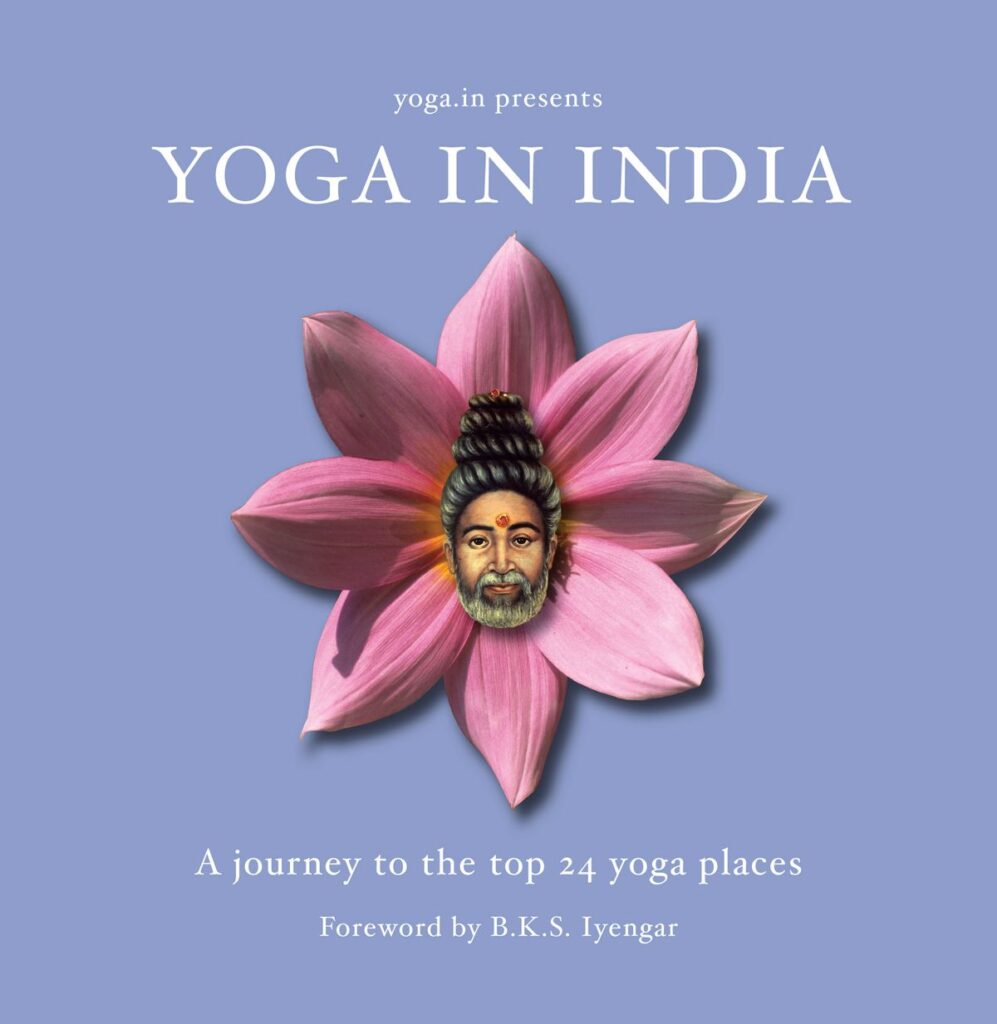
India. The birthplace and heartland of yoga. Within the thousands of learning centres is a small handful that share their wisdom in a unique way. Yoga in India: A Journey to the Top 24 Yoga Places, the only one of its kind, is a guide to the top 24 yoga centres in India. From ashram to resort, from the Himalayan foothills to the beaches of Goa, from a bearded guru to an American dancer, this eclectic collection will inspire, captivate, and inform. Based on first-hand research, after months of journeying through India visiting each of the centers, this is the perfect gift for any aspiring yogi or yogini. With the foreword written by the esteemed B.K.S Iyengar, and a smorgasbord of stunning analogue photographs, Yoga in India is a must for any bookshelf.
Available from Amazon.com